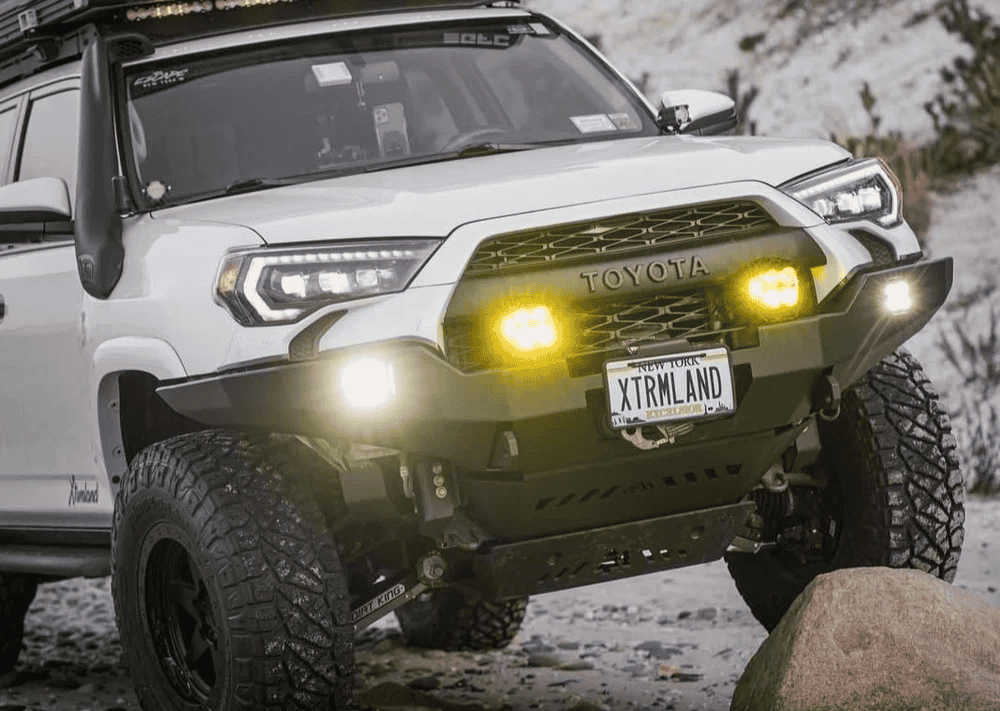Overland Vehicles

The Continental Divide Trail 4x4 experience follows a spine of backroads that parallels the hiking route along the Rockies from the border near Antelope Wells to the border near Roosville. Drivers link national forest roads, ranch tracks, and quiet pavement to cover roughly two thousand seven hundred miles, with optional side loops that add challenge. New Mexico brings long desert stretches, volcanic mesas, and wind that tests fuel economy. Colorado delivers the big climbs, with passes that can linger under snow well into summer and storms that build by afternoon. Wyoming’s Great Divide Basin is a study in wide horizons and two track sand, while Idaho and Montana weave through timber, river valleys, and country known for bears.
Terrain varies by state and day. Expect washboard that rattles gear, embedded rock that begs for careful tire placement, and clay that turns slick when wet. Many sections are easy in dry weather but change character after rain or spring melt. Some iconic passes in Colorado and Montana demand patience, low range, and a careful eye for exposure. Legal access is a constant consideration, as the hiking trail often parallels but does not allow motorized travel. Respect signage and stay on open roads to keep the route viable for everyone.
Navigation blends art and discipline. GPS tracks are helpful, but paper maps and an awareness of detours make the difference when a gate is locked or a slide closes a road. Apps like Gaia GPS and ONX Offroad help with land boundaries and alternatives. Signal can fade for hours, so download layers in advance and carry a satellite communicator for check ins and emergencies. The rhythm of the route rewards early starts and a steady pace that protects the vehicle while still covering ground.
Timing is the heartbeat of a successful trip. Many teams start in late June or early July to clear lingering snow in Colorado, then move north with the melt. Monsoon storms in New Mexico can arrive in midsummer and turn dirt into gumbo, so have patience and wait out sloppy conditions. Fall brings stable weather and crisp nights, but higher passes can close with the first early storm. Always check forest orders and local ranger updates before committing to a section.
Fuel planning is non negotiable. New Mexico has long legs between services, and headwinds or sand can increase consumption. Keep a margin of safety, know the next town with fuel, and verify station hours in rural communities. Water is just as critical. Carry more than you think you need, refill at towns and developed sites, and filter from reliable sources where allowed.
Permits and regulations vary. Licensed vehicles on public roads typically do not need separate OHV permits, but some states have unique rules, and fire restrictions change fast. In grizzly country, follow food storage orders in developed and dispersed sites using approved containers or hard sided vehicles. Practice Leave No Trace, stay on durable surfaces, and avoid rutting muddy tracks. Wildlife has right of way, and speed should match sightlines on narrow forest roads.
Camping options are plentiful through national forests and on public lands where dispersed camping is allowed. Set up on already impacted sites, keep fires small or skip them during restrictions, and pack out everything. Plan town days to resupply, grab a meal, and handle laundry. A rest rhythm helps drivers stay sharp and reduces mistakes that lead to trail damage or mechanical issues.
Bring a satellite messenger for two way communication, weather checks, and SOS capability. GMRS or ham radios help with convoy coordination and spotting on tight climbs. Share your itinerary with a trusted contact and check in regularly. In thunderstorm season, clear high points early and watch for fast rising creeks. A calm approach to obstacles paired with good spotting prevents most mishaps.
A dependable high clearance 4x4 with low range makes the route safer and less stressful. All terrain tires, a full size spare, and a method to repair punctures are table stakes. Underbody protection shields vital components from ledges and hidden rocks. Carry a jack that works on uneven ground, traction boards, soft shackles, and a quality recovery strap. Keep heavy items low and forward, and secure everything so it does not move in rough sections. Lighting matters for camp setup and rare night moves, but plan travel during daylight to spot hazards.
Power management keeps cameras, fridges, and nav gear running for weeks. A dedicated house battery with solar or alternator charging prevents dead starts. Storage that separates dirty recovery gear from clean camp items keeps life easier in mixed weather. Ventilation and heat control help at both desert and alpine camps. Finally, etiquette makes you a good neighbor on the route. Yield to uphill traffic, slow for cyclists and hikers, and pull fully off the track for oncoming rigs where safe. Wave, share conditions, and leave every gate as you found it.
For drivers building a purpose ready setup, a tailored overland system designed around payload, suspension tuning, and reliable power can turn a long wish list into a dependable tool. See how complete platforms come together on Explore overland rigs.
The Divide rewards preparation, patience, and a quiet respect for remote country. Set your window for the right season, bring the right maps and mindset, and keep your vehicle simple and dependable. If you want a team that listens first and then builds to your plan, explore a focused upgrade path with Custom overland upfit and learn how we work on Why choose OZK Customs.
Ready to build a rig that thrives on the Divide and every mile after it? Tell us how you travel and we will design the right overland setup with power, storage, protection, and lighting tuned for real trail conditions. Share your trip goals in the form and let OZK Customs turn your route plan into a dialed adventure vehicle.
ADDRESS:
6159 E Huntsville Rd, Fayetteville, AR 72701
PHONE:
(479) 326-9200
EMAIL:
info@ozkvans.com